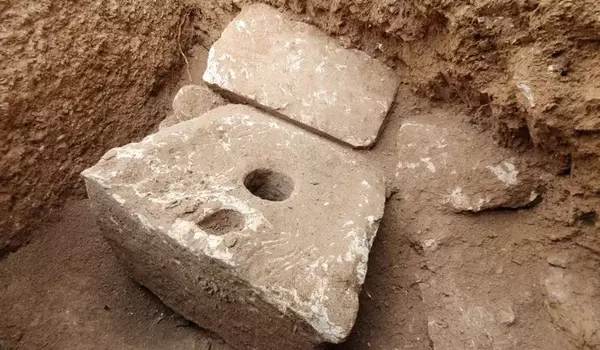Archaeological research frequently reveals different features of historical cultures, including sanitation practices; nevertheless, establishing direct linkages between specific diseases and ancient sanitation infrastructure can be difficult. Dysentery is a contagious disease caused by bacteria, viruses, or parasites that are spread by contaminated food, water, or inadequate hygiene practices. A study of 2,500-year-old latrines from the biblical Kingdom of Judah discovered Giardia, a parasite that can cause diarrhoea.
A recent study of historical excrement from two Jerusalem latrines from the biblical Kingdom of Judah has discovered remnants of the single-celled bacteria Giardia duodenalis, which is a common cause of debilitating diarrhoea in people.
According to the University of Cambridge, this is the oldest example of this diarrhoea-causing parasite infecting humans anywhere on the world. The findings have been published in the journal Parasitology.
“The presence of these parasites in sediment from two Iron Age Jerusalem cesspits suggests that dysentery was endemic in the Kingdom of Judah,” research lead author Dr. Piers Mitchell of Cambridge’s Department of Archaeology said.
Dysentery is spread by faeces contaminating drinking water or food. We suspected it could have been a major problem in early cities of the ancient Near East due to overcrowding, heat and flies, and limited water available in the summer.
Dr Piers Mitchell
“Dysentery refers to intestinal infectious diseases caused by parasites and bacteria, which cause diarrhoea, abdominal cramps, fever, and dehydration.” It can be lethal, especially for small children.”
“Dysentery is spread by faeces contaminating drinking water or food,” Mitchell explained. “We suspected it could have been a major problem in early cities of the ancient Near East due to overcrowding, heat and flies, and limited water available in the summer.”
The faeces were collected from the dirt beneath toilets discovered in two building complexes unearthed to the south of the Old City that date back to the 7th century BCE, when Jerusalem was the capital of Judah. During this period, Judah was a tributary state of the Assyrian Empire, which spanned from the Levant to the Persian Gulf and included much of modern-day Iran and Iraq. Jerusalem would have been a flourishing political and religious hub estimated to have had between 8,000 and 25,000 residents.

Both toilets had carved stone seats that were nearly identical in design: a shallow curved surface for sitting, a huge centre hole for excrement, and an adjacent hole at the front for male urination. “Toilets with cesspits from this time are relatively rare and were usually made only for the elite,” Mitchell added.
One came from a nicely designed estate in Armon ha-Natziv, surrounded by an exquisite garden. The site, which was excavated in 2019, most likely dates from the reign of monarch Manasseh, an Assyrian client monarch who ruled for fifty years in the mid-7th century. The House of Ahiel, which housed an upper-class family at the time, was the location of the other toilet. Date of construction is hard to pin down, with some placing it around the 8th century BCE.
Its collapse, however, may be confidently dated to 586 BCE, when Babylonian monarch Nebuchadnezzar II violently attacked Jerusalem for the second time when its residents refused to pay their promised tribute, effectively ending the Kingdom of Judah.
Diarrhoea was a problem for the people of what is now the Near and Middle East, according to ancient medical books from Mesopotamia throughout the first and second millennia BCE. “If a person eats bread and drinks beer and then his stomach is colicky, he has cramps, and he has a flowing of the bowels, setu has gotten him,” one example says.
The cuneiform word often used in these texts to describe diarrhoea was sà si-sá. Some texts also included recommended incantations for reciting to increase the chances of recovery. “These early written sources do not provide causes of diarrhoea, but they encourage us to apply modern techniques to investigate which pathogens might have been involved,” said Mitchell. “We know for sure that Giardia was one of those infections responsible.”
The team investigated the two-and-a-half-thousand-year-old decomposed biblical period faeces by applying a bio-molecular technique called “ELISA,” in which antibodies bind onto the proteins uniquely produced by particular species of single-celled organisms.
“Unlike other intestinal parasite eggs, the protozoa that cause dysentery are fragile and extremely difficult to detect in ancient samples using microscopes without antibodies,” said co-author and Cambridge PhD candidate Tianyi Wang.
Previous research has found signs of the Entamoeba parasite, which also causes dysentery, dating back over 4,000 years to Neolithic Greece. Previous research has also revealed that users of ancient Judean toilets become sick with intestinal parasites including as whipworm, tapeworm, and pinworm.
















